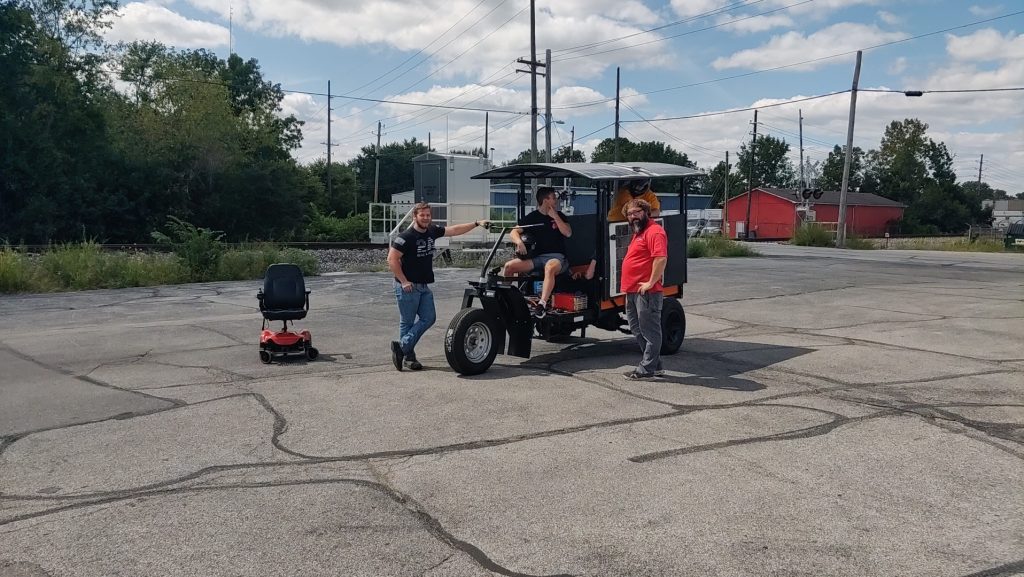Engineering Students and Faculty Serve Nonprofit While Transforming Vehicle for the African Sun
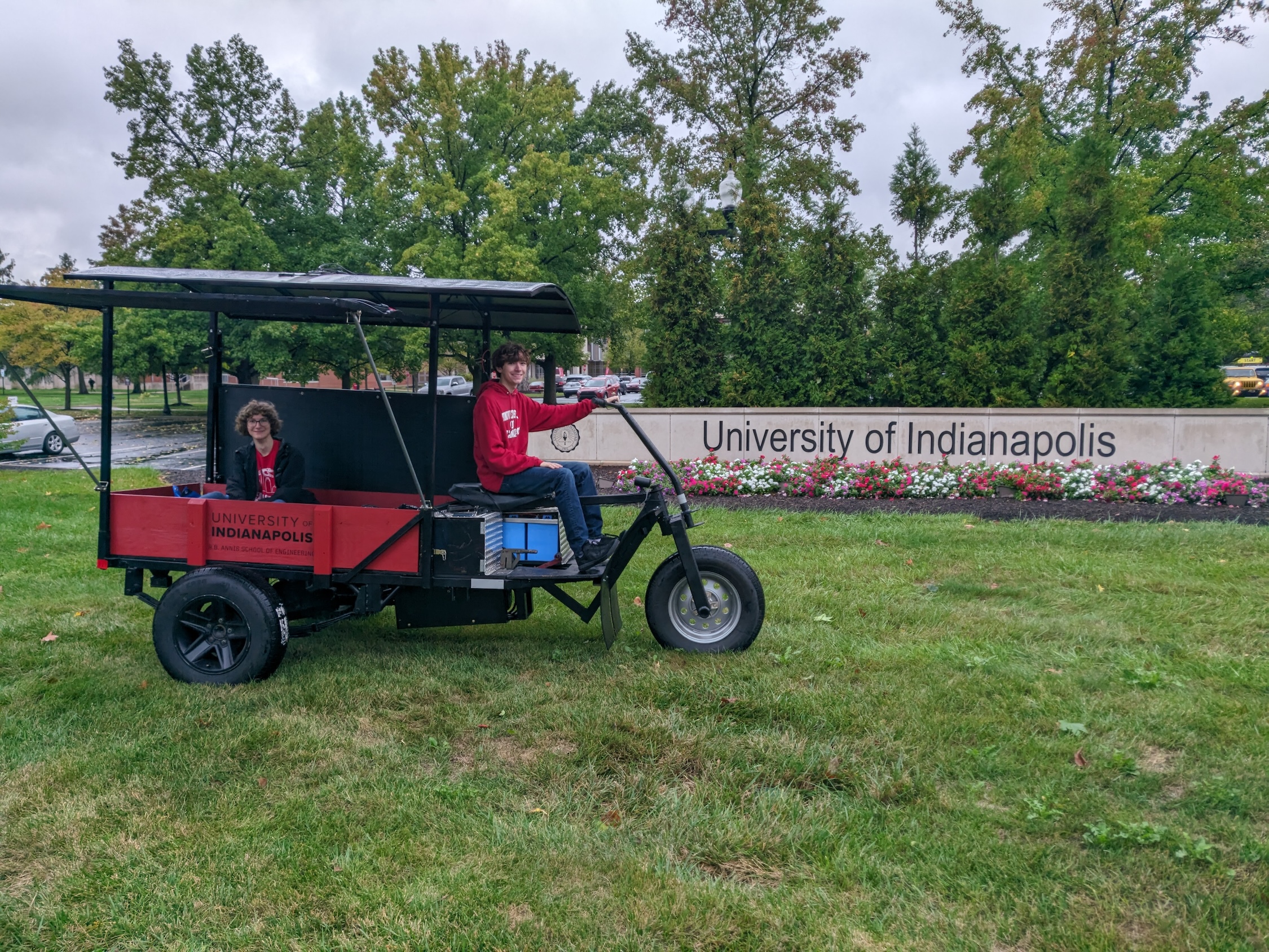
We’ve all been there—taking on what seems to be just a ‘little’ project around the house or the yard, and that ballooning into something far more complicated and convoluted than we ever imagined. That’s just what happened to students and faculty at the R.B. Annis School of Engineering earlier this year. But thanks to perseverance, dedication, problem solving, and not to mention hundreds of hours of work, a major triumph was achieved with the successful design of an eco-friendly vehicle that can harness the African sun. It’s a prototype that could lead to far bigger things, and at least one UIndy student transformed the real-world educational opportunity into a paid internship offer.
The story of the project began this spring when the initial Basic Utility Vehicle or BUV from the Indianapolis-based Institute for Affordable Transportation (IAT) arrived at the Annis School, around the time of another successful engineering project connected to the school’s DesignSpine curriculum. The vehicle appeared to have all the parts needed for a transformation to an all-electric powertrain, but it wasn’t working. But both the initial hobbyist who conceptualized the eBUV as well as an entire team of engineers at another university in Indiana, who had constructed the roof system to support the solar panels, had been unable to figure out the problem.
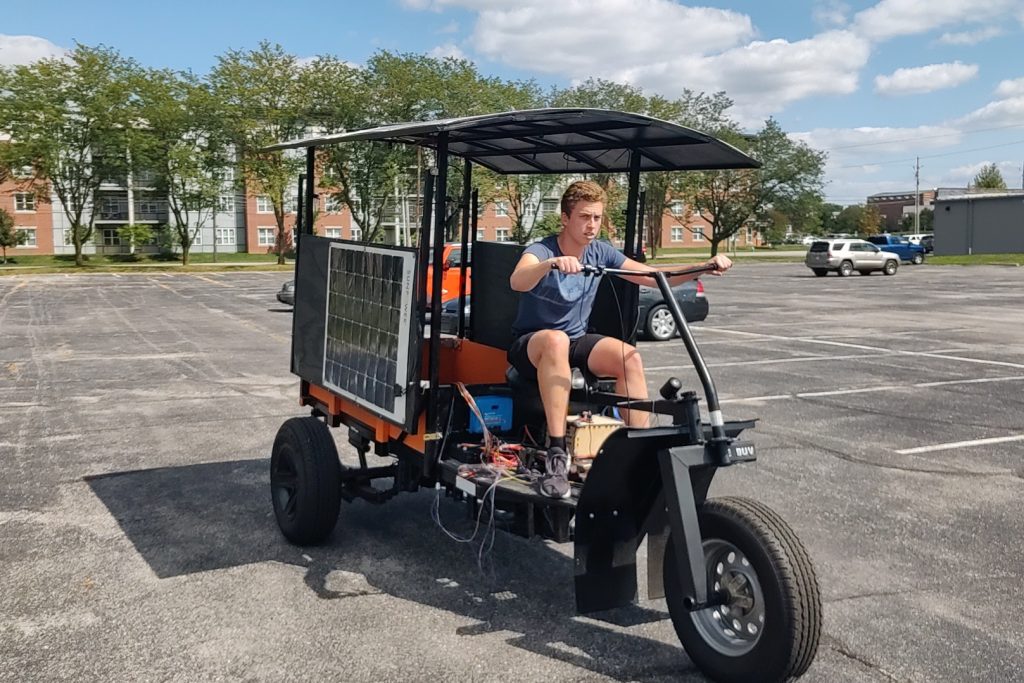
The so-called ‘little’ project quickly turned into a bigger one, calling upon the skills and expertise of a number of different experts in their field, with a strong harkening back to UIndy’s motto of “Education for Service.” For example, the motor wasn’t mounted properly so James Emery, manager of mechanical systems and laboratories, jumped in to mount it properly and led the way with all mechanical work. Dr. Paul Talaga, associate professor of engineering, along with sophomore student Nate Viewegh ‘27 (Electrical Engineering) eventually discovered the root of the problem: the solar batteries were in deep sleep mode. As they researched how to bring them out of sleep mode, they realized that the batteries were part of a recall and needed to be replaced. Talaga and Viewegh also worked together to determine how to program the industrial motor controller while Viewegh rewired the entire vehicle himself.
Roughly 300 hours of work later, the eBUV was finally ready to roll this fall. That’s where the fun really began in terms of exploring what exactly it could do and how it might be able to help families and villages thousands of miles away. Many people at this year’s HoundHustle 5K Run/Walk in September during the Homecoming & Family Weekend may have seen the eBUV (see photo at left).
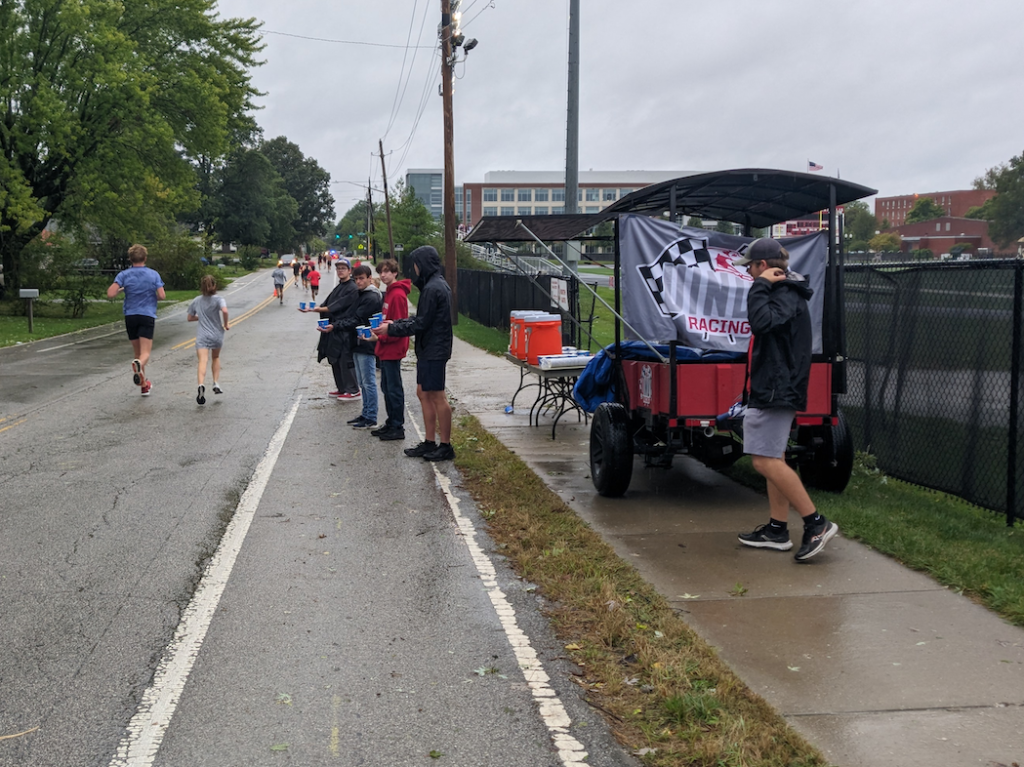
“We quickly realized this is way more useful to a developing country than just driving around and moving things from one place to another,” said Talaga. “The solar panels can power a house or a smart small business.”
For Viewegh, it was an extremely practical and in-depth education about electrical engineering, integrating various electrical components, the importance of rigorous testing and troubleshooting. It also deepened his understanding of how to design systems which are not only effective but also safe and reliable, especially in a challenging environment like sub-Saharan Africa.
“I appreciate the opportunity to create an engineering solution that directly impacts people in their daily lives,” said Viewegh. “Using more sustainable energy storage and solar panels made the project exciting to work with, especially knowing the impact it could have on rural farming communities.”
At a recent job fair, he got an interview on the spot with NSA Crane, which then offered a summer internship on the spot to someone with less than two years of formal engineering schooling.
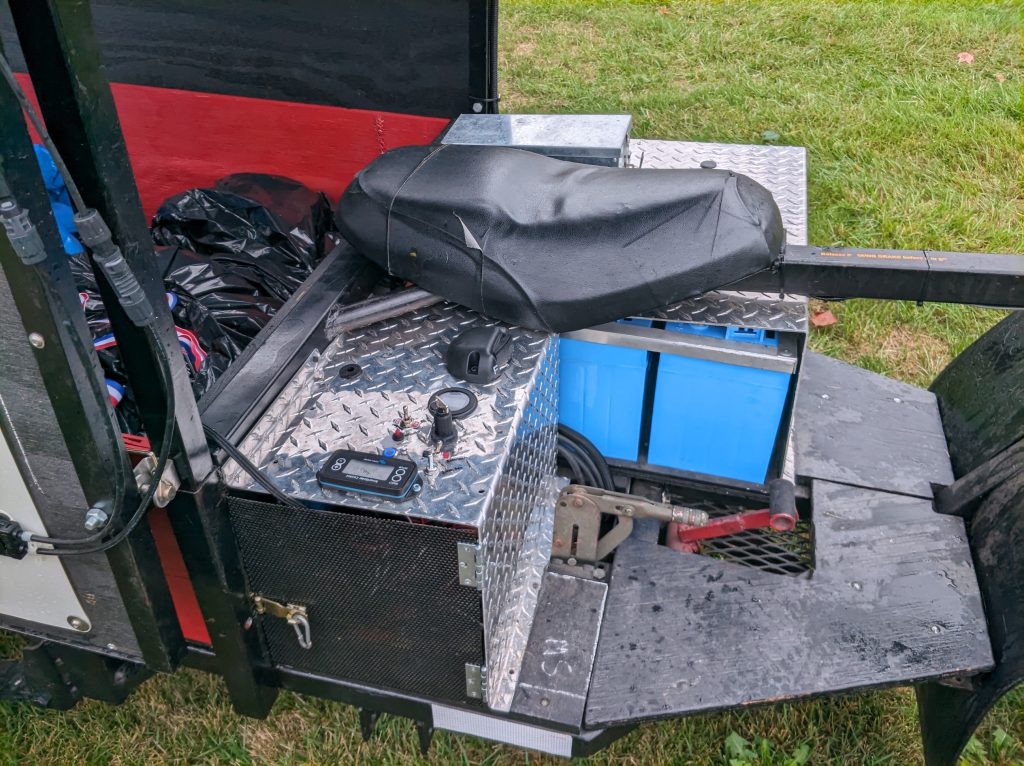
“I was really impressed that he got an interview and a job offer because he could explain his experiences and the things he’s been able to accomplish as just a sophomore,” said Emery. “That’s really, really awesome in addition to the service aspect of this, helping third-world countries. It’s really meaningful.”
“The experience has equipped me with valuable skills such as technical design and problem solving,” added Viewegh. “Additionally, I’m excited to apply what I’ve learned to future projects in the area of sustainable energy.”
The range for a fully-charged vehicle is estimated at 30 miles, but the battery is powerful enough to charge a refrigerator that could store medications or other necessities. And by keeping the solar panel batteries on, especially in the direct rays of an equatorial sun, it could do miles more. Talaga sees it mostly as a proof-of-concept vehicle that IAT could use to further refine and develop in the future.
“If you just leave it in the field for two days, it will completely charge itself,” added Talaga. “You never have to actually fill this with diesel or any fuel whatsoever. It’s highly efficient for remote areas.”
The completed eBUV was returned to IAT in October where it is expected to head over to Niger in the near future to be used by a family to tackle their farm work and projects, both large and small, all thanks to the efforts of the team at UIndy.
